Everyone knows that as people age, they get frail. Our firm, toned bodies of our early twenties turn into the softer and rounder bodies of our thirties, forties, and fifties. These bodies in turn start thinning out into our sixties, seventies and beyond.
Most people don’t know that this phenomenon is called Sarcopenia, and it is a natural process that everyone experiences. This well-known medical condition is unavoidable.
Sarcopenia, also known as age-related muscle atrophy is one of the major causes of loss of quality-of-life. This loss of muscle and consequently strength, is often what causes people to stop participating in their favorite activities and hobbies. Sarcopenia is what makes it harder and harder for people to get out of low chairs and sofas. As we lose strength in our legs, it becomes harder to walk, harder to climb stairs and just generally, harder to get around.
There is no gender discrimination in Sarcopenia, both men and women experience it. For women, the situation is even more challenging due to the effect of menopause on bone density. For this reason, one may say that strength training is even more important for women than for men.
Though the natural onset of Sarcopenia is unavoidable, it is however, a phenomenon that can be slowed down and even reversed. Muscles are tissues that grow due to use and over-use. The simple process of loading muscles and working them against resistance that they are not used to, results in growth. Growth can be attained at any age. Sure, it is easier to grow muscle when we are young. This is true especially for men, as this is when their testosterone levels are the highest, but a simple strength training regimen will be beneficial to people of both genders with their battle against frailty.
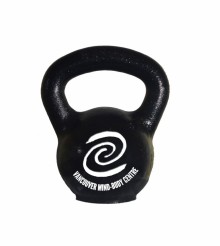
Most people equate strength training with weight training. The idea of spending hours in the gym going from one intricate machine to the other is not appealing to most. There is no question, one can gain strength and muscle by using weights and the exercise options are limitless. One of the simplest weight-training tools is the kettlebell. It can’t get much simpler than this; it is a metal ball with a handle.
However, in our opinion, the easiest weight to work with is the one that is most readily available to us all – that is our own body. It is always with us so why not use it? The term bodyweight training refers to strength training whereby one uses the weight of the body-only to load the muscles and cause them to develop. A common misconception is that exercise with body-weight only is not enough for strength training. However, when done right, that is truly all we need. When we walk, we transfer the weight of the entire body from one leg to the next. Obviously, this is not a hard exercise for most healthy people. The reason is, that our legs bend very little when we walk. Consequently, the muscles work through a very limited range of motion. When we walk up steps, the range of motion through which the muscle has to work is larger and hence, walking up steps is harder. Extrapolating this line of thought, a simple lunge would take the muscles into the same range of motion as is encountered in getting up from a chair. Of course, when getting out of a chair, we use both legs. By doing a simple lunge exercise, we load the leg muscles beyond what is required to get out of a chair and thus enables us to strengthen and build more muscle.
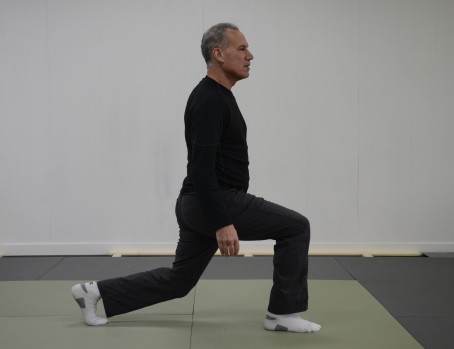
Body weight exercises can be made harder to a point. Obviously, the heaviest load we can challenge our body with, is the weight of our body. This is not to say that one can’t create extremely challenging exercises with body weight only. It is simple yet very difficult to load the entire weight on one limb. One example of this is the pistol squat.
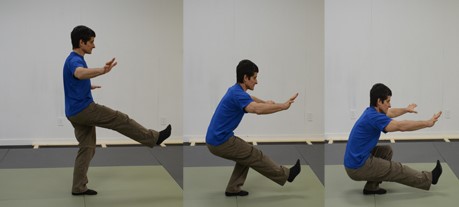
Unfortunately, the balance and strength required to perform such exercises necessitates a great amount of practice. A simpler way to attain the same result is by adding some external weight to the body and practicing a more straight-forward exercises.
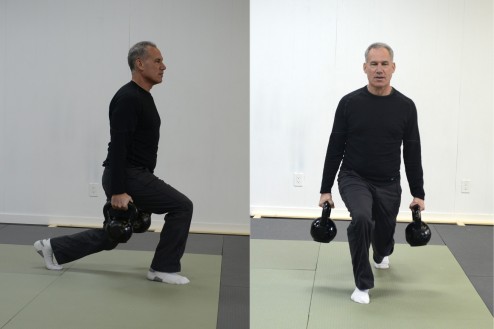
This type of progressive approach can be utilised in all types of exercises to slowly increase the load and resistance presented to our body and thus grow muscle cells and slow-down the onset of Sarcopenia. One of the most important muscle groups in our body is the one in our mid-section. The often used and oft misused term ‘Core-training’ refers in general to the strengthening of the abdominal muscles. In reality, our core is so much more! The mid-section of our body must be strong in the front, side and back. Both on the surface, and deep within the body. We often think of toned abs as the holy grail of a strong core, but the reality is, a visible six-pack is not important nor sufficient. The deep muscles that stabilise our torso, support our back, and allow us to get up from a supine or seated position, are the most important.
Core training need not involve endless sit-ups or crunches. We have all seen the late-night infomercials peddling the ‘best tool’ for getting a six-pack. Save your money! The simplest tool again, is the one we already have, no need to send a check plus shipping, it is indeed our body. The best exercise to start strengthening the core is the lowly plank. This too can be progressed from easy to extremely demanding by simple changing how the supports are arranged.
Start with a plank on your elbows and toes. If this is too hard support yourself on your knees and elbows. As you get stronger, come onto your hands and then reduce and move the hand position. Below you will find a picture showing several plank progressions.
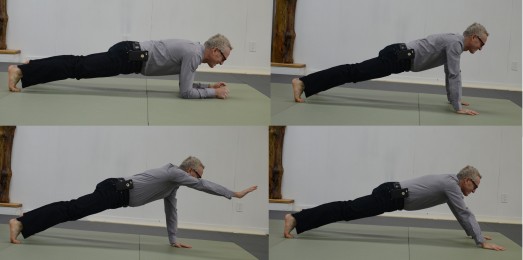
No matter what muscle we wish to work on, we can move through every muscle group and load it to help it grow. Start slow and use your body only in the simplest, most natural positions. As we get stronger, we simply increase the difficulty by re-arranging our supports (where we place our limbs). As we get even stronger, we may choose to add weights. Regardless of how strong we are now, it is important to build muscles to preserve function. Delay or prevent the effects of Sarcopenia so that we can maintain quality of life and continue doing what we love to do as we age.
